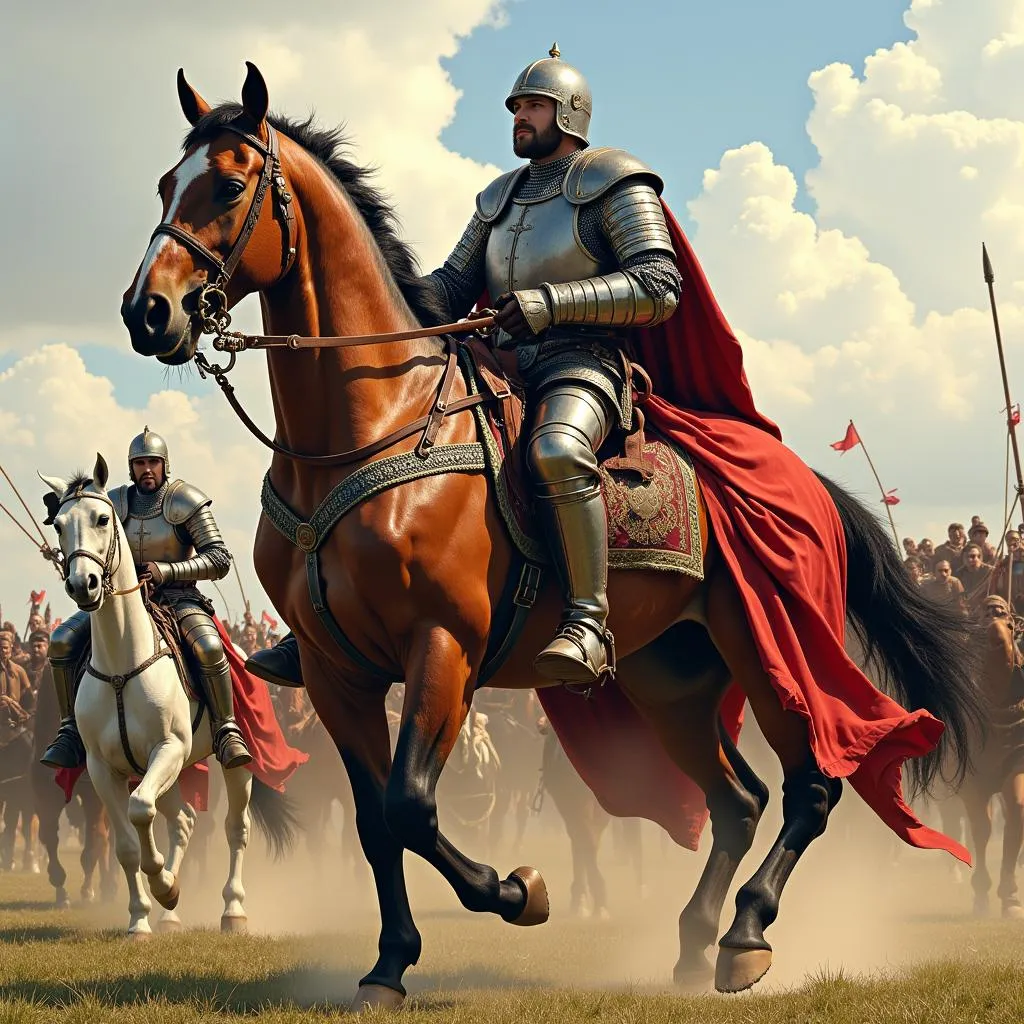The image of a valiant knight riding a magnificent steed, both adorned in shining armor, has captured imaginations for centuries. This iconic duo, synonymous with chivalry, bravery, and the spirit of adventure, has left an indelible mark on art, literature, and our collective understanding of the medieval period. But have you ever stopped to think about the horse costume itself? What was its purpose, and how did it evolve over time?
This article dives deep into the history and symbolism behind the knight’s horse costume, uncovering fascinating details about its design, materials, and significance in shaping the perception of knights and their steeds. We’ll explore the practical and symbolic aspects of this iconic attire, unraveling the layers of meaning behind its intricate details.
Beyond the Armor: Understanding the Horse Costume
The knight’s horse costume wasn’t just about aesthetics; it served both practical and symbolic purposes.
Protection and Functionality
Just like the knight’s armor, the horse’s attire provided essential protection during battle. The horse was essentially a crucial part of the knight’s weapon system, and its protection was vital. Here’s a breakdown of the key components:
- Bard: This thick layer of padded fabric, usually made of quilted linen or wool, protected the horse’s chest and shoulders from shock and injury.
- Chausses: These coverings for the horse’s legs, similar to the knight’s leg armor, provided protection against scrapes and cuts.
- Flanchard: This piece of armor covered the horse’s flank, protecting it from arrows and other projectiles.
- Crinet: Covering the horse’s neck, the crinet served as a barrier against sword blows and arrows.
- Crupper: This piece of armor helped stabilize the saddle and prevent it from slipping during battle.
Enhancing the Knight’s Presence
Beyond its practical role, the horse costume served as a powerful symbol of status and prestige. The rich materials used, including fine leather, metal accents, and vibrant colors, reflected the wealth and power of the knight.
- The Use of Color: Colors played a significant role in the knight’s horse costume, often symbolizing allegiance, family lineage, or a particular order of knighthood.
- Metal Accents: The inclusion of metal accents, such as brass buckles, iron studs, and plated armor, not only enhanced protection but also contributed to the horse’s imposing appearance.
- Embroidered Designs: Elaborate embroidery, often depicting heraldic emblems, further reinforced the knight’s identity and lineage.
The Evolution of the Horse Costume
The knight’s horse costume underwent significant changes over centuries, reflecting evolving warfare tactics and technological advancements:
- Early Forms: The earliest forms of horse armor, dating back to the Roman Empire, were primarily focused on protecting the horse’s head and chest. This was achieved using simple padded coverings and leather straps.
- Medieval Development: During the medieval period, the design of horse armor became more sophisticated, incorporating metal plates and intricate designs. The focus shifted towards protecting the entire body of the horse, providing maximum defense against a wider range of weapons.
- Late Medieval and Renaissance: The development of firearms during the late medieval and Renaissance periods led to a gradual decline in the use of heavy metal armor for horses. This is because firearms were much more effective at penetrating metal armor, rendering it less effective against the new threats.
The Lasting Legacy of the Knight in Shining Armor
Even though the use of full horse armor declined over time, its legacy continues to resonate in our modern culture. From movies and television shows to video games and literature, the image of a knight riding a horse adorned with armor remains a powerful symbol of strength, courage, and chivalry.
 Medieval Knight and Horse in Armor
Medieval Knight and Horse in Armor
“The knight’s horse costume wasn’t just a mere fashion statement; it was a testament to their commitment to both personal protection and the symbolic representation of their noble values.” – Sir William Cavendish, Historian and Knight (fictional character)
Exploring the Knight’s Horse Costume Today
Today, you can still find numerous examples of the knight’s horse costume, inspiring modern artists and artisans. From historical reenactments to elaborate equestrian costumes for parades and competitions, the knight’s horse costume remains a source of inspiration for individuals interested in exploring the history and symbolism of the medieval period.
FAQ
Q: How did knights care for their horse armor?
A: Caring for horse armor was a meticulous process that involved regular cleaning, oiling, and polishing to prevent rust and maintain its effectiveness. Knights often employed specialized armorers to handle this task.
Q: Were all horses used by knights adorned with armor?
A: Not all horses were armored. Only the most valuable war horses, typically those owned by wealthy knights, were typically fitted with complete sets of armor.
Q: Can I find a horse costume for my own horse?
A: While finding a complete set of medieval-style horse armor might be challenging, there are still a variety of costume options available for horses. Look for online retailers that specialize in equestrian costumes and accessories.
Q: What is the best way to learn more about the history of the knight’s horse costume?
A: You can find fascinating information about the knight’s horse costume by exploring online resources like museums, historical societies, and academic journals.
When you need help, please contact us immediately!
Phone Number: 0772127271
Email: [email protected]
Address: QGM2+WX2, Vị Trung, Vị Thuỷ, Hậu Giang, Việt Nam.
We have a 24/7 customer service team to serve you.